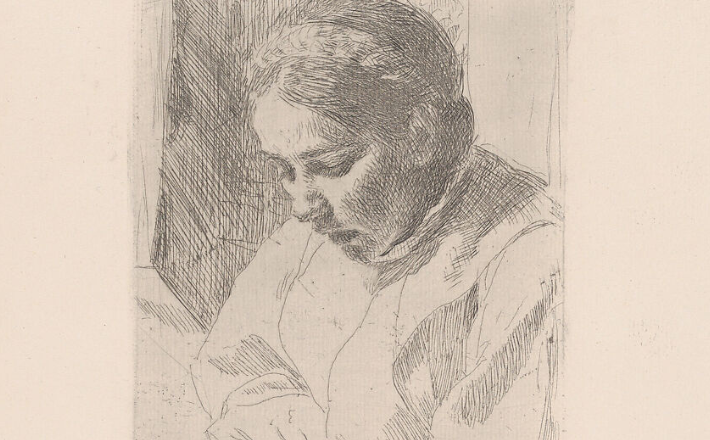Commentary on Hosea 1:2-10
Hosea’s family life serves as a powerful but potentially problematic metaphor for Israel’s unfaithfulness to God.
Powerful metaphor
The opening chapter of Hosea depicts a prophetic sign act in which God commands the prophet to take a “wife of prostitution” (verse 2, New Revised Standard Version Updated Edition) and have children. While symbolic actions often involve temporary dramatic activities—one might remember Isaiah walking around naked or Jeremiah wearing a yoke—Hosea is called to symbolize his prophetic message personally and familially. Similarly, Jeremiah will later be commanded not to marry (Jeremiah 16:1–2), while Ezekiel will be commanded not to mourn the death of his wife (Ezekiel 24:15–25). The divine command to Hosea is intended to shock the audience, which would not associate a holy person of God, a prophet, with promiscuity.
The symbolic action serves as a metaphor for the relationship between God and God’s people, Israel, placing the prophet in the role of God, and Gomer, his wife, as Israel. Thus, according to the logic of the marriage metaphor, God is like a faithful husband who is married to Israel, a faithless wife. A compelling metaphor is at work. Powerful contrasts are at play.
God People of Israel
Hosea Gomer
Husband Wife
Faithful Unfaithful
This living message—Hosea’s family life—complements the prophet’s oracles in the rest of the book. In the historical context of the eighth century BCE, the prophet judges Israel and its leaders for a lack of faithfulness, as witnessed by their worship of other gods. In addition, the leaders of the day are not demonstrating trust in God but instead forming alliances with Egypt and Assyria.1 Their disloyalty is both religious and political.
The marriage metaphor is expanded in Hosea 1:3–9 when the focus shifts to the prophet’s family, not just his wife. Hosea gives each of his children symbolic names:
- Jezreel – “God sows”
- Lo-ruhamah – “Not shown mercy”
- Lo-ammi – “Not my people”
Therefore, Hosea and Gomer’s children continually remind the community of their faithlessness. We might imagine Hosea calling his child “Not My People” home for dinner, reminding his neighbors of their breach of the covenant.
Intriguingly, the chapter concludes with a reversal—the children’s names lose the “not” and transform into images of hope: “For great shall be the day of Jezreel. Say to your brother, “My People,” and to your sister, “Shown Mercy” (1:11b–2:1). It’s a small moment of hope within a larger literary context of judgment in Hosea 1–3. It’s almost as if the original message was too extreme, judgmental, and shocking for folks.
Potentially problematic metaphor
Some contemporary Christians have seen a story of God’s mercy and redemption in this passage. For example, Francine Rivers’ 1990s novel Redeeming Love is a Christian romance novel that interprets this biblical story. In her retelling, Hosea’s character becomes a hero, and all possible threats of abuse against Gomer (as portrayed, for example, in Hosea 2) are completely ignored in order to preserve the quality of romance.
Yet, there are several reasons to interpret Hosea 1 with great theological and ethical care.
It may be, in fact, that the prophetic marriage metaphor—with its gendered power dynamics—is ultimately unhelpful for a contemporary understanding of the relationship between God and God’s people. Indeed, we need additional and alternative metaphors. Hosea 11, later in this same prophetic book, provides a parental metaphor full of tenderness and concern.
Metaphors are not perfect—they always break down at some point. So, while this metaphor attempts to call Israel back to faith, its depiction of Gomer (and, thereby, of wives) as promiscuous is harmful. To place the male character in the role of God and the female character in the role of the people may reflect ancient thinking, but it leads to unfruitful interpretations today.
There is no faithful reading of this passage that leads to abuse or violence of any kind against women.
We do not hear from Gomer in Hosea 1. We are told little about her. This paucity of information only fuels Christians’ imagination, often in damaging and misogynistic ways.
But how might she respond to such a marital situation?
How might she react to Hosea’s depiction of her?
One creative way to push against the detrimental potentiality of this marriage metaphor may be to give Gomer her voice, to consider her rejoinder to God’s command, and to center her agency in an inspired reimagining of the story.
Notes
- For more information about the overall message of Hosea, see the following free, online course: Rolf A. Jacbson and Tyler Mayfield, “Hosea,” Enter the Bible, https://enterthebible.org/courses/hosea.


July 27, 2025